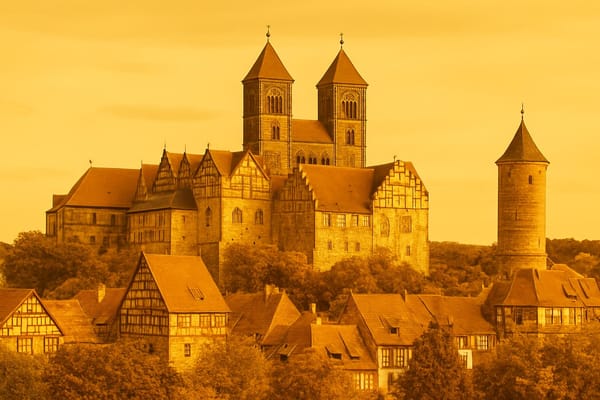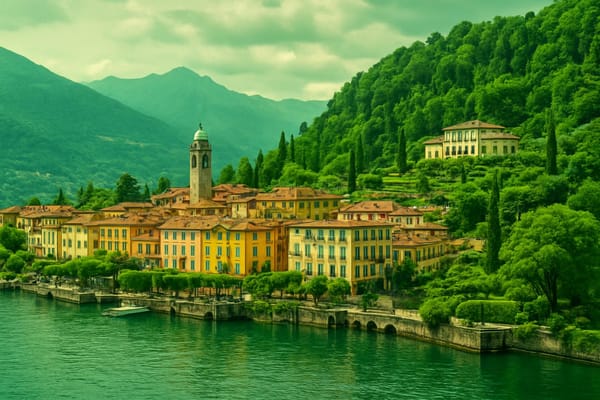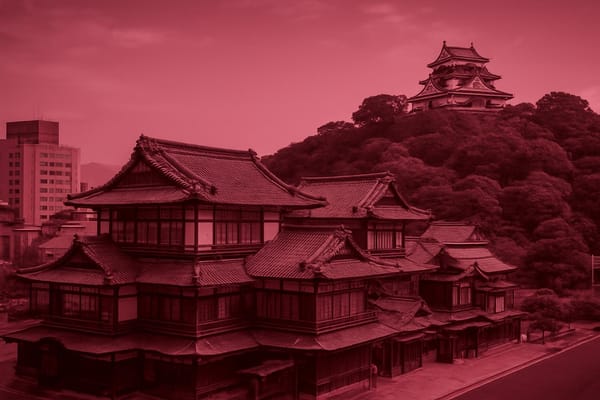Burgos
Gothic cathedral, Camino de Santiago stop, UNESCO site, archaeology, medieval charm & gastronomy

Important things to know about Burgos
Burgos, in the heart of Castilla y León in Spain, is a city that blends a quiet provincial rhythm with deep-rooted history and contemporary urban life; its streets and neighborhoods reflect centuries of social and economic evolution, where traditional gastronomy coexists alongside modern restaurants and emerging culinary trends, and where local industries, service sectors and a growing knowledge economy-anchored by the university and research initiatives-help shape daily life and employment. The city’s character is informed by its position in northern Spain, its continental climate of clear seasons, and a strong regional identity that values language, festivals and community customs; residents often take pride in preserving culinary specialties, artisanal trades and seasonal markets while embracing new cultural expressions in music, theater and visual arts through active cultural institutions and local initiatives. Urban planning here balances historic quarters with contemporary developments, while green corridors along the Arlanzón provide recreational space and a sense of continuity between past and present. Burgos’s role as a provincial capital gives it administrative importance, a concentration of services and transport links to the wider region of Castilla y León and beyond, and a demographic mix that includes families, students and professionals contributing to a lively but manageable city pace. For anyone writing about cities in Spain, Burgos stands out as an example of how tradition and modernity can coexist: a place defined by resilient community life, evolving economic anchors and a cultural fabric that remains distinctly Castilian yet open to innovation.
Sightseeing hot-spots in Burgos
Burgos is a compact jewel in northern Spain whose rich past unfolds at every corner, making it a top destination for travelers seeking history and culture. At the heart of the city stands the Burgos Cathedral, a stunning Gothic masterpiece and UNESCO World Heritage site whose pinnacles and intricate façades draw photographers and pilgrims alike. Strolling from the cathedral along the winding streets of the old town, visitors encounter a harmonious blend of medieval charm and lively Spanish ambiance, with cafés spilling onto plazas and the gentle flow of the Arlanzón River offering tranquil riverside walks.
Beyond the cathedral, Burgos offers a variety of attractions that showcase its layered identity, from cutting-edge museums to serene monastic retreats. The Museo de la Evolución Humana (MEH) provides a modern, engaging look at human prehistory and links the region to remarkable archaeological finds, while the imposing Arco de Santa María and the peaceful Cartuja de Miraflores offer glimpses of Spain’s artistic and religious heritage. History buffs will appreciate the Monasterio de las Huelgas, and those seeking views can climb toward the Castillo de Burgos ruins for panoramic cityscapes. Food lovers will also be rewarded: Burgos is famed for specialties like morcilla de Burgos and hearty Castilian cuisine, perfect after a day of sightseeing.
Whether arriving as a stop on the Camino de Santiago or planning a dedicated city break, Burgos delivers a memorable mix of monuments, museums, and strollable streets that make exploration effortless. The city is ideal for photography, leisurely walks and cultural immersion; spring and autumn bring mild weather and fewer crowds, while festivals and weekly markets add local color year-round. Visiting Burgos means experiencing a compact Spanish city where world-class heritage and everyday life come together, making it an essential highlight on any northern Spain itinerary.
Hotels to enjoy in Burgos
Burgos, Spain, offers a rich selection of hotels in Burgos that combine historic charm with modern comfort, making the city an ideal destination for culture lovers and pilgrims on the Camino de Santiago. Many accommodations sit within walking distance of the Cathedral of Burgos and the historic center, so guests can easily explore medieval streets and world-class architecture. Whether you prefer boutique hotels with individually designed rooms, family-run guesthouses that emphasize warm hospitality, or upscale properties with spa and gourmet dining, Burgos delivers options for every travel style. Business travelers will find hotels with reliable free Wi-Fi, meeting facilities and convenient central location access, while holidaymakers can prioritize panoramic views, parking, and comfortable suites.
Choosing among the hotels in Burgos is also about savoring local gastronomy and discovering nearby attractions such as museums, parks, and the scenic Arlanzón riverside. Many hotels promote sustainable practices and provide tailored services like early breakfast for pilgrims, bicycle storage, and multilingual staff to enhance the guest experience. For the best value, look for accommodations that combine proximity to the cathedral and main sights with excellent reviews for cleanliness and service. With its mix of history, culture and modern amenities, Burgos remains an appealing destination where quality accommodation enriches every stay and helps travelers make the most of northern Spain.
Restaurants to try in Burgos
Burgos restaurants offer a rich fusion of traditional Castilian flavors and modern culinary creativity, making the city a must-visit for food lovers exploring Castile and León. Strolling from the Cathedral of Burgos to the lively old town, visitors find everything from rustic taverns serving hearty lechazo asado (roast lamb) and morcilla de Burgos (blood sausage) to contemporary kitchens reinterpreting local ingredients. The food scene in Burgos balances affordable tapas and generous raciones with refined tasting menus that highlight seasonal produce, locally raised lamb, premium beef cuts like chuletón, and artisanal cheeses. Pairing these dishes with nearby Ribera del Duero or Rioja wines enhances the dining experience, and many restaurants in Burgos emphasize sustainable sourcing and traditional techniques, appealing to travelers searching for authentic Burgos cuisine and memorable dining experiences.
Beyond signature dishes, restaurants of Burgos range from cozy neighborhood bars where locals gather to chat over a glass of wine to elegant establishments led by chefs who celebrate the region’s culinary heritage. The best restaurants in Burgos focus on warm hospitality, carefully curated wine lists, and menus that tell the story of the surrounding countryside - the valleys, rivers, and farms that supply fresh ingredients daily. Whether seeking a casual tapas crawl near the historic Arco de Santa María or a special occasion meal at a gastronomic venue, visitors will find Burgos dining options that satisfy both craving and curiosity, reinforcing Burgos as an emerging destination for Spanish culinary tourism.
Best shopping stops in Burgos
Burgos, Spain invites shoppers with a charming blend of historic streets and modern retail conveniences, making shopping in Burgos a memorable part of any visit. Strolling down Calle Vitoria and the winding lanes around the cathedral you’ll find independent boutiques, artisan workshops and elegant windows showcasing Spanish fashion alongside locally designed pieces. The city’s historic centre is dotted with antique shops and specialty stores where visitors searching for the best shopping in Burgos can discover one-off treasures, while contemporary malls and commercial areas provide the convenience of larger brands and year-round sales. For food lovers, the Mercado de Abastos pulses with fresh produce, cured meats and regional delicacies that reflect the culinary heart of Burgos Spain.
When deciding what to buy, Burgos delivers a distinct Castilian flavor: bring home culinary classics like morcilla de Burgos and creamy Queso de Burgos, pair them with a bottle of local Ribera del Duero wine, or choose handcrafted leather goods and ceramics from local artisans. Markets and small shops are ideal for finding handmade jewelry, textiles and authentic souvenirs that capture the city’s medieval spirit. Practical shopping tips-shop mornings for market freshness, expect siesta hours in some small shops, and inquire about tax-free options if you’re an international visitor-help you make the most of Burgos shopping highlights. Whether you’re after gourmet bites, artisan crafts or stylish Spanish fashion, Burgos offers varied shopping experiences that satisfy both souvenir hunters and serious shoppers alike.
Nightlife highlights in Burgos
Burgos nightlife comes alive when the sun sets over the Cathedral, and the city's compact historic centre makes it easy to hop from one vibrant spot to the next. Start with classic tapas bars around Plaza Mayor and Calle San Lorenzo, where locals sip vermouth and sample regional flavours before a late dinner. As the evening deepens, atmospheric wine bars and cosy taverns invite relaxed conversation, while trendy cocktail lounges and craft beer pubs cater to younger crowds looking for inventive drinks and friendly vibes. The blend of medieval streets and contemporary venues gives Burgos a nightlife scene that feels both authentic and fresh, ideal for travellers seeking memorable nights in northern Spain.
For those chasing music and dancing, Burgos offers a steady rotation of live music nights, DJ sets, and intimate concerts that showcase everything from flamenco to indie rock. Nightclubs open late and provide high-energy options for partygoers, while quieter venues often host local artists and jam sessions for a more cultured evening. Whether your plan is a leisurely tapas crawl or an all‑night club experience, Burgos nightlife delivers variety, warmth, and the kind of local hospitality that turns a single evening into an unforgettable part of your Spanish itinerary.
Getting around in Burgos
Burgos offers practical options for travelers: the small Burgos Airport (Villafría) sits a short drive north of the city and handles a mix of regional flights, general aviation and occasional seasonal connections, making arrival and departure convenient for visitors who value quick access to the historic center, while ground transport and taxi links bridge the roughly 6 km to the city; complementing air access, the Burgos train station provides regular RENFE services and regional connections that integrate Burgos into Spain’s broader rail network, with reliable daytime trains linking to major hubs such as Madrid and Valladolid and facilitating easy transfers for both commuters and tourists, so whether you search for “Burgos airport” or “Burgos train” you’ll find practical travel alternatives, integrated ticketing options and onward bus and taxi services that make Burgos a well-connected destination in España, ideal for visitors planning cultural trips, business travel or regional exploration.
Culture must-see's in Burgos
Burgos, Spain, is a treasure trove of cultural highlights that blend medieval grandeur with vibrant contemporary life. At its heart stands the Cathedral of Burgos, a masterpiece of Gothic architecture and a UNESCO World Heritage site whose spires and intricate façades attract pilgrims and art lovers alike. The city's role on the Camino de Santiago pilgrimage route gives it a timeless spiritual rhythm, while the legacy of El Cid-the legendary Castilian hero-echoes through monuments and street names. Walking the historic center reveals well-preserved medieval streets, charming plazas, and the imposing Cartuja de Miraflores monastery, where Renaissance art and peaceful cloisters offer a contrast to the bustling markets and modern galleries. Museums such as the Museum of Burgos and smaller cultural spaces showcase archaeology, medieval armour, and the region’s Castile and León heritage, making the city a cultural hub for history enthusiasts.
Beyond architecture and museums, Burgos is renowned for its living traditions and gastronomy, with hearty Castilian dishes and local wines that reflect the surrounding Duero and Arlanza valleys. Seasonal festivals, classical concerts held inside historic buildings, and contemporary art exhibitions produce a dynamic calendar appealing to diverse visitors. The city's cultural scene is increasingly recognized for balancing preservation with innovation: restoration projects maintain the Cathedral and ancient walls while creative cultural programming invigorates public spaces. Whether drawn by sacred art, legendary history, or culinary delights, travelers find Burgos a compelling destination where medieval charm and modern cultural life intersect, offering rich experiences for both short visits and deeper explorations.
History of Burgos
Burgos has roots that reach back before the Middle Ages, with traces of Roman and Celtiberian settlements on the plateau of northern Spain. The city as it is known today grew out of the repopulation efforts led by Count Diego Rodríguez Porcelos around 884, a strategic foundation that quickly made Burgos a focal point in the emerging territory of Castile. Through the 11th and 12th centuries the town expanded in importance as a political and commercial center, attracting merchants, clergy and pilgrims traveling the Way of St. James. The construction of the iconic Burgos Cathedral began in 1221 and over the following centuries the imposing Gothic cathedral came to symbolize the city’s religious and artistic stature. As a medieval capital, Burgos fostered a thriving cultural life, leaving behind a rich urban fabric of monasteries, churches and noble houses that testify to its role in the Reconquista and in the consolidation of the Kingdom of Castile. The cathedral’s architecture, the presence of important relics and tombs - including the legendary burial associations with El Cid - helped ensure Burgos’s place in both spiritual and historical narratives of Spain.
The later history of Burgos reflects cycles of conflict, renewal and modernization. During the Peninsular War the city was the scene of the 1812 Siege of Burgos, a dramatic episode that affected its population and defensive structures. The 19th and 20th centuries brought industrialization and demographic change, while preservation efforts and new institutions have strengthened Burgos’s cultural profile: museums such as the Museum of Human Evolution highlight both prehistoric finds from nearby Atapuerca and the long historical arc that defines the province. Today the history of Burgos is a major draw for cultural tourism, pilgrimage and scholarly study, as visitors trace medieval streets, explore fortress walls and marvel at the details of the Catedral de Burgos, a UNESCO-recognized masterpiece. The city balances conservation and contemporary life, making Burgos not only a repository of Spanish history but a living hub where past and present meet along the ancient routes of Castile and León and the enduring paths of the Camino.



